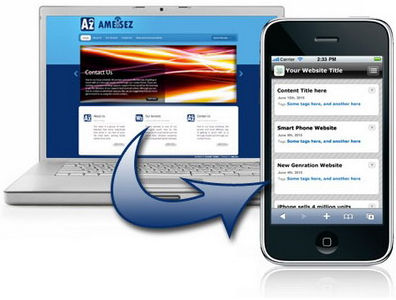I’m constantly approached by developers working on new Mobile apps and by translators working on the localization of existing mobile apps asking me for guidelines and best practices on how to write or translate for Mobile. I’ve given the topic a lot of thoughts and I come out with the 3 magic Fs rule: No, the 3 Fs don’t stand for Francesco, Francesco and Francesco; they stand for Fast, Focus and Fun.
When writing for mobile, keep in mind the intended audience: mobile users have less time and shorter attention spam than regular web users. And they want to have fun. So here it goes:
1. Fast: Keep it brief. Be concise and precise. Try to use the same number of characters as in the English source (including spaces), and don’t use more unless absolutely necessary. Describe only what’s necessary, and no more. Don’t try to explain subtle differences. They will be lost on most users.
2. Focus: Keep it simple. Pretend you’re speaking to someone who’s smart and competent, but doesn’t understand technical jargon. Use short words, active verbs, and common nouns. Put the most important thing first. The first words in a sentence should include at least a hint of the most important information in the phrase.
3. Fun: Be friendly. Talk directly to the reader using second person “you”*. If your text doesn’t read the way you’d say it in a casual conversation, it’s probably not the way you should write it. Don’t be abrupt or annoying. Make the user feel safe, happy and energized. Don’t use abbreviations to shorten a word or a phrase. Abbreviations as a shortcut for space restrictions must be avoided at all times.
1. Keep it brief.
 Too formal
Too formal
Consult the documentation that came with your phone for further instructions.
 Preferred
Preferred
Read the instructions that came with your phone.
2. Keep it simple.
 Confusing
Confusing
You cannot perform this action with this app because this feature is not supported for your country. Please use the main website instead.
 Crystal clear
Crystal clear
This feature is not supported in your country yet. Please use the website.
3. Be friendly.
 Confusing
Confusing
Sorry! The app is not responding. Please close it and reopen it.
 Shorter, more direct, no fake apologetic
Shorter, more direct, no fake apologetic
The app isn’t responding. Please restart.
4. Put the most important thing first.
 Task last
Task last
Tap Next to complete setup.
 Task first
Task first
To complete the setup, tap Next.
5. Describe only what’s necessary, and no more.
 Too wordy
Too wordy
The app needs to communicate with our servers to sign in to your account. This may take a few moments.
 Short and to the point
Short and to the point
The app is connecting to the server. This can take a few moments.
6. Don’t use abbreviations to shorten a word or phrase
 Abbreviation
Abbreviation
Go to Intl. settings.
 Spelled out
Spelled out
Go to International settings.
Being fast means that features are fast to use, therefore the text needs to be fast to read. Focus is about simplicity, therefore the text needs to be easy to read. Fun is about engagement, therefore text needs to be friendly.

